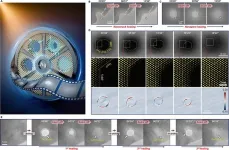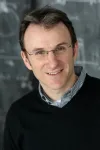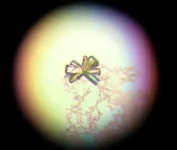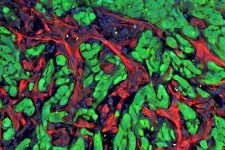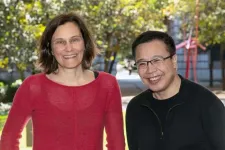(Press-News.org)
As an innovative concept in materials science and engineering, the inspiration of self-healing materials comes from living organisms that have the innate ability to self-heal. Along with this line, the search for self-healing materials has been generally focused on “soft” materials like polymers and hydrogels. For solid-state metals instead, one may intuitively imagine that any form of self-healing will be much more difficult to achieve.
While a few past studies showcased the self-healing behavior in metals that more or less requires the assistance of external triggers (e.g. by heating, mechanical stimulus, or electron beam irradiation), whether the autonomous self-healing can occur in metal solids without any external intervention remains a scientific curiosity.
Now in a new study published in Matter, researchers from Institute of Physics (IOP) of the Chinese Academy of Sciences discovered that such an intrinsic and autonomous self-healing phenomenon can occur in nanoscale silver (Ag).
This study, which combines advanced in-situ transmission electron microscopy (TEM) with molecular dynamics (MD) simulations, reveals that nanoscale Ag can autonomously repair itself from structural damages such as nanocracks and nanopores without external intervention.
This remarkable ability is observed not only at room temperature but also at frigid temperatures as low as 173 K.
Notably, over the same damaging area, the repeated reversible self-healing cycles can also be achieved with the same level of efficiency.
The experiments were performed inside an atomic-resolution TEM by utilizing single-crystalline Ag nanosheets as testing specimens. Both nanopores and nanocracks were purposefully fabricated through in-situ drilling by TEM electron beam.
To avoid any possible intervention to the healing process, Ag nanosheet specimen was afterwards kept at a “beam-off” state all through until each moment for interval TEM imaging.
As an interesting and perhaps surprising result, the two representative kinds of structural damages were observed to undergo rapid self-healing autonomously within several to dozens of minutes, with the healed regions perfectly restoring the crystal lattice of Ag with atomically precise ordering.
Unlike Ag, gold (Au) did not show similar self-healing behavior at room temperature, despite the fact that Au is the most relevant element to Ag in the Periodic Table and they share many similarities in physical and chemical properties.
Further MD simulation results well reproduce the experimental observations, especially regarding the difference in the healing behavior between Ag and Au. What sets Ag apart from Au is its high mobility of surface diffusion, a trait not commonly found in other metal solids.
By employing TEM, the researchers were able to in-situ track the trajectories of healing process in Ag at the atomic level. With a combination of atomistic imaging and theoretical simulation results, the research highlights that self-healing is enabled by the surface-mediated self-diffusion of Ag atoms as driven by chemical potential imbalance due to Gibbs-Thomson effect.
When a nascent damage structure (either nanopore or nanocrack) begins its existence in Ag nanosheet, there will create a concave site with the negative local curvature. Due to the general curvature-dependence of chemical potential, the concave damage site will thereby have smaller chemical potential relative to the undamaged areas of the nanosheet. This built-in imbalance of chemical potential drives Ag atoms to migrate and repair the damage autonomously, showcasing a sophisticated form of material self-maintenance in negative feedback way.
The ability of Ag to autonomously self-heal nanoscale damages at room temperature and below shows promising possibility for developing damage-tolerant components and devices at the sub-micrometer length scale.
Perhaps more importantly, in a broader term, this unusual finding at a mechanistic level may provide a guiding framework for deeper understanding of the self-healing phenomena and concepts in metal solids in general.
END
East Hanover, NJ – September 6, 2024 – Employment and labor force participation trends for people with disabilities appear to be stabilizing after several years of growth that reduced the gaps between individuals with and without disabilities, according to today’s National Trends in Disability Employment – semi-monthly update (nTIDE) issued by Kessler Foundation and the University of New Hampshire’s Institute on Disability (UNH-IOD).
Over the past three months, both groups have seen declines in employment and labor force participation, reflecting a broader workforce ...
Wiley, one of the world’s largest publishers and a global leader in research and learning, today announced the addition of ten computed CNMR databases totaling over 384,000 records to its KnowItAll NMR Spectral Library collection. With this addition, the KnowItAll NMR collection now provides access to over 1.3 million spectra, making it one of the most comprehensive collections of NMR spectral data available.
“These new databases significantly enhance our ability to support researchers in their quest ...
Montreal, Canada - The "Innovators & Ideas: Research Leader" section of Genomic Psychiatry (ISSN: 2997-2388), published by Genomic Press, New York, features an illuminating Genomic Press Interview with Dr. Gustavo Turecki, a trailblazer in psychiatric research at McGill University. The interview delves into Turecki's pioneering work on depression, suicide prevention, and the molecular underpinnings of mental health, offering valuable insights into cutting-edge research shaping our understanding of these critical issues.
Dr. Turecki, who serves as the Chair of the Department of Psychiatry at McGill ...
Researchers have achieved data rates as high as 424Gbit/s across a 53-km turbulent free-space optical link using plasmonic modulators— devices that uses special light waves called surface plasmon polaritons to control and change optical signals. The new research lays the groundwork for high-speed optical communication links that transmit data over open air or space.
Free-space-optical communication networks could aid space exploration because they can provide high-speed, high-capacity data transmission with lower latency and less interference than traditional radio frequency communication systems. ...
Mill Valley, CA – September 5, 2024 – The SynGAP Research Fund 501(c)(3) is proud to announce its continued collaboration with the University of Pennsylvania’s (UPenn) Orphan Disease Center (ODC) through the Million Dollar Bike Ride (MDBR) Pilot Grant Program. ODC is accepting proposals for a grant award of $74,851 to further advance critical research in SYNGAP1-Related Disorders (SRD). Instructions for submitting a letter of interest are available here. Applications are due in two weeks by September 20, 2024.
Why We Participate in This Project
The SynGAP Research ...
The first crystal structure of an alternative DNA shape from the insulin gene has been revealed by a UCL-led research team.
DNA is widely accepted to be formed of two strands that wind around one another, known as a double helix, but it is possible for DNA to change shape and structure. The new study, published in Nature Communications, reveals the detail in the structure of a type of DNA called i-motif by crystallising it for the first time.
Co-lead author Dr Zoë Waller (UCL School of Pharmacy) ...
Conservation efforts directed towards just 0.7% of the world’s land mass could help protect one third of the world’s threatened and unique tetrapod (four-limbed vertebrate) species, new research by Imperial College London, On the Edge, and ZSL has shown.
The study, led by researchers at Imperial College London and published this week in Nature Communications, finds that large gains in conservation are possible by focusing on areas home to exceptional biodiversity and species with high levels of evolutionary distinctiveness and global ...
When it comes to cancer metastasis, it takes two to tango. That was one of the key findings of a new study led by researchers at Memorial Sloan Kettering Cancer Center (MSK): The TGF-beta and RAS signaling pathways work together to spur the spread of cancer in lung adenocarcinoma, a leading cause of cancer deaths around the world.
Take away one of those two signals, and lung cancer will not be able to spread (metastasize) to new parts of the body, their findings in animal models suggest.
The research, published September 6 in Cell, points to new opportunities to potentially prevent metastasis, thanks to an updated understanding of the underlying processes.
“About ...
Conservation needs to scale successfully to protect nature. A new paper takes lessons from around the world to show how that might be done.
To reverse biodiversity loss and meet ambitious global targets, conservation programmes designed to preserve everything from forests to fish need to work ‘at scale’.
Scaling can mean three things. Scaling ‘out’ means expanding a programme to new people and places, while scaling ‘up’ means bringing in higher-level institutions, such as governments introducing policies or incentives that make it easier for individuals and private companies to engage.
Scaling ‘deep’ means changing hearts and minds – ...
A new study led by Rice University’s Qimiao Si has unveiled a new class of quantum critical metal, shedding light on the intricate interactions of electrons within quantum materials. Published in Physical Review Letters on Sept. 6, the research explores the effects of Kondo coupling and chiral spin liquids within specific lattice structures.
“The insights gained from this discovery could lead to the development of electronic devices with extreme sensitivity, driven by the unique properties of quantum-critical ...
